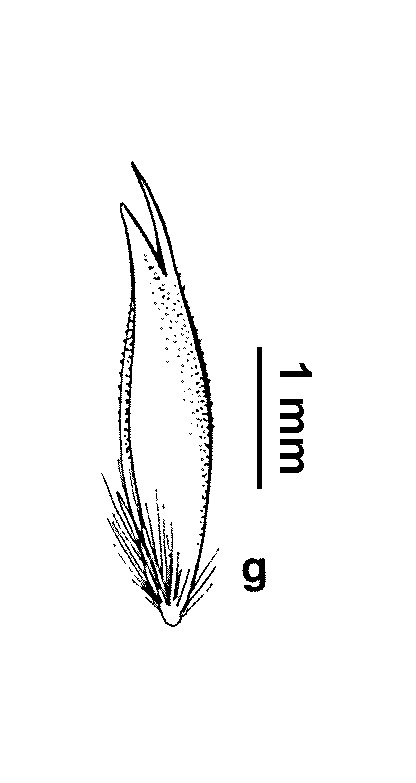Deyeuxia contracta
(F.Muell. ex Hook.f.) VickeryTufted annual or perennial, culms weakly ascending or erect, to 80 cm high. Leaves smooth to finely scabrous, occasionally sparsely slightly hairy; blade flat, to 20 cm long and 3.5 mm wide, generally weak and flaccid; ligule obtuse, 1–3 mm long. Inflorescence a loosely contracted panicle, 5–12 cm long (rarely more). Spikelets plumpish, mostly 2–2.5(–3) mm long, mostly pale green, maturing to straw-coloured; glumes acute, gaping at maturity, the upper usually slightly longer, both scabrous along the keel; lemma equal to or slightly exceeding the glumes, acute, rather plump, minutely scabrous, thin and hyaline toward the apex, awned from just below the apex; awn fine, straight, c. 0.5 mm long, not or barely exceeding lemma; callus hairs to c. 0.8 mm long; rachilla bristle 0.4–0.7 mm long, glabrous or with fine hairs to c. 0.5 mm long; anthers c. 0.3 mm long. Flowers Dec.–Mar.
GipP, EGL, EGU, HSF, Strz, HFE, VAlp. Also NSW, Tas. Mainly confined to shaded, usually lowland forests from about Lakes Entrance eastwards (Brodribb and Rodger River headwaters, Soda Creek near Mt Drummer, Bonang area), and often occurring in or near Lilly-pilly dominated warm-temperate rainforest ('jungle' vegetation). There are isolated occurrences in cool hilly country further west in the Strzelecki Ranges.
The distinctions between Deyeuxia contracta and D. scaberula are slight and although specimens can usually be assigned with confidence to either species, some apparent intermediates occur, particualrly to the west of the 'core' range of D. contracta. This suggests that these two species may be better recognised at an infraspecific level.
Walsh, N.G. (1994). Poaceae. In: Walsh, N.G.; Entwisle, T.J., Flora of Victoria Vol. 2, Ferns and Allied Plants, Conifers and Monocotyledons, pp. 356–627. Inkata Press, Melbourne.
 Spinning
Spinning

